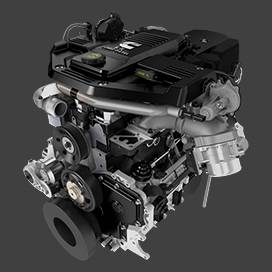ធ្នូ . 10, 2024 04:47 Back to list
brake drums vs discs
Brake Drums vs. Brake Discs A Comprehensive Comparison
When it comes to vehicle braking systems, two primary types of mechanisms are widely used brake drums and brake discs (also known as brake rotors). Each system has its advantages and disadvantages, and choosing between them can have significant implications for vehicle performance, safety, and maintenance. Understanding the key differences can help car owners and manufacturers make informed decisions when it comes to vehicle design and maintenance.
Brake Drums An Overview
Brake drums have been around for a long time and are commonly found in older vehicles, as well as in some modern cars, especially on the rear wheels. The fundamental principle behind brake drums is relatively straightforward. When the brake pedal is pressed, brake shoes expand outward against the inner surface of the drum, creating friction which slows down or stops the wheel from turning.
Advantages of Brake Drums
1. Cost-Effectiveness One of the primary benefits of brake drums is their lower manufacturing and replacement costs compared to brake discs. This makes them an attractive option for budget-conscious consumers.
2. Simplicity Brake drum systems are generally simpler in design, which can make installation and maintenance easier in certain scenarios. Fewer components mean there is less that can go wrong mechanically.
3. Effective for Smaller Vehicles For smaller, lighter vehicles that do not demand extreme braking force, brake drums can provide sufficient stopping power without the need for the more advanced disc systems.
Disadvantages of Brake Drums
1. Heat Dissipation Brake drums do not dissipate heat as effectively as discs. This can lead to brake fade—when the braking system loses effectiveness due to overheating, particularly during prolonged braking or when going downhill.
3. Less Responsive Due to their design, brake drums often provide less immediate braking response compared to discs, which can be a critical factor in emergency situations.
Brake Discs An Overview
brake drums vs discs

Brake discs have become the more popular choice for modern vehicles, particularly for the front brakes where stopping power is critical. The mechanism involves a rotor attached to the wheel, where brake pads squeeze against the disc to create friction.
Advantages of Brake Discs
1. Effective Heat Dissipation One of the standout features of brake discs is their ability to dissipate heat more effectively. This makes them less prone to brake fade, allowing for more consistent braking performance over time.
2. Higher Performance Disc brakes provide quicker responses and better stopping power, making them preferable for high-performance vehicles and in situations requiring rapid deceleration.
3. Lightweight Brake discs are typically lighter than drums, which can contribute to improved fuel efficiency and handling dynamics in a vehicle.
Disadvantages of Brake Discs
1. Cost The initial cost of brake discs, including installation and maintenance, is higher compared to brake drums. This can deter some consumers and manufacturers from choosing disc systems for budget models.
2. Complexity The design of brake discs can be more complex, involving additional components such as calipers and pads, which may lead to increased maintenance needs over time.
3. Dust and Wear Brake pads on disc brakes can produce a significant amount of dust, leading to more frequent cleaning. Additionally, pads and rotors tend to wear faster than drum systems, requiring regular monitoring and replacement.
Conclusion
In summary, both brake drums and brake discs have their respective advantages and disadvantages. Brake drums can be cost-effective and straightforward, making them suitable for smaller vehicles and budget-conscious consumers. On the other hand, brake discs offer enhanced performance, heat dissipation, and quicker response times, making them the preferred choice for modern vehicles, especially those requiring reliable braking performance.
Ultimately, the choice between brake drums and discs will depend on various factors, including the type of vehicle, driving conditions, and personal preferences. Whether opting for the reliability of drum brakes or the superior performance of disc brakes, understanding the fundamental differences can help ensure a safer driving experience.
-
Volvo Brake Drum: OEM Quality, Optimal Safety
NewsAug.27,2025
-
Durable Brake Drum MAZ for Heavy Duty Trucks | High Performance
NewsAug.26,2025
-
FUWA: Premium Quality, Reliable Performance & Innovative Solutions
NewsAug.25,2025
-
Liza Brake Drum: Superior Quality & Performance for Safe Driving
NewsAug.24,2025
-
Iveco Brake Drum | Premium OE Quality for Daily & Eurocargo
NewsAug.22,2025
-
Your Brake Drum Man: Quality & Performance Parts
NewsAug.21,2025
